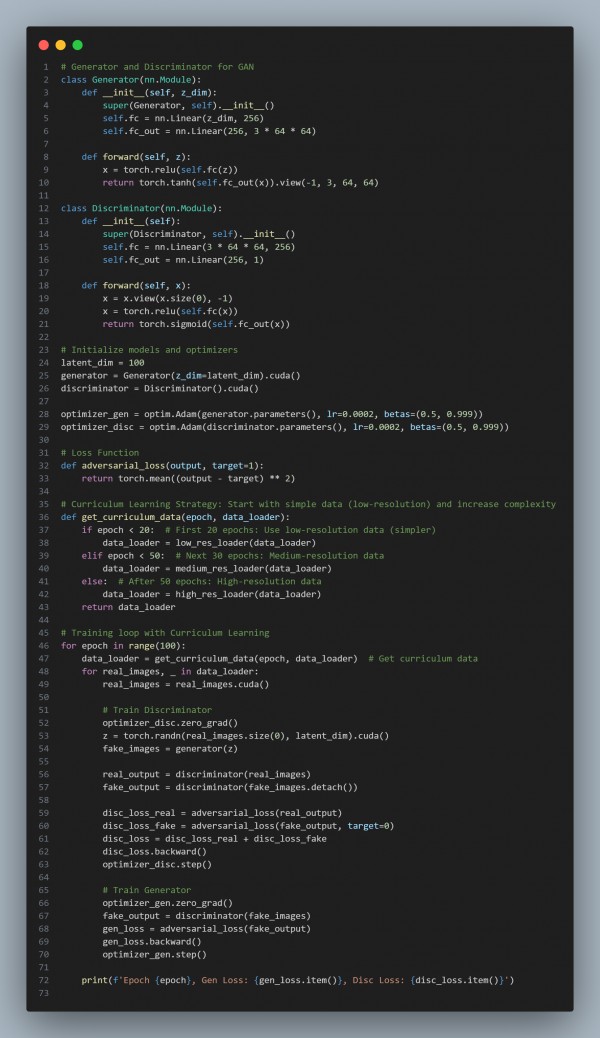Curriculum learning can be applied to GANs by gradually increasing the complexity of the data or tasks the generator and discriminator are exposed to, allowing the model to learn easier patterns first before progressing to more difficult ones. Here are the key steps you can refer to:
- Start with Simple Data: Begin training the GAN on simpler, less complex data (e.g., low-resolution images or simple patterns).
- Progressively Increase Difficulty: Gradually introduce more complex data as training progresses, such as higher-resolution images or more varied data distributions.
- Curriculum Strategy: Control the difficulty by adjusting the level of noise or randomization in the data or by progressively increasing image resolution.
Here is the code snippet you can refer to:

In the above code, we are using the following:
- Curriculum Data: Start training with simpler data (e.g., lower resolution) and gradually increase the complexity of the data (e.g., higher resolution).
- Progressive Difficulty: This method helps the GAN model to first master basic features and then progressively tackle more complex patterns.
- Stable Training: By easing the model into increasingly complex data, this method stabilizes training, preventing mode collapse and improving image quality over time.
Hence, by referring to the above, you can apply Curriculum learning to GANs to improve image-generation tasks over time.
Related Post: GAN training for high-resolution image generation
 REGISTER FOR FREE WEBINAR
X
REGISTER FOR FREE WEBINAR
X
 Thank you for registering
Join Edureka Meetup community for 100+ Free Webinars each month
JOIN MEETUP GROUP
Thank you for registering
Join Edureka Meetup community for 100+ Free Webinars each month
JOIN MEETUP GROUP